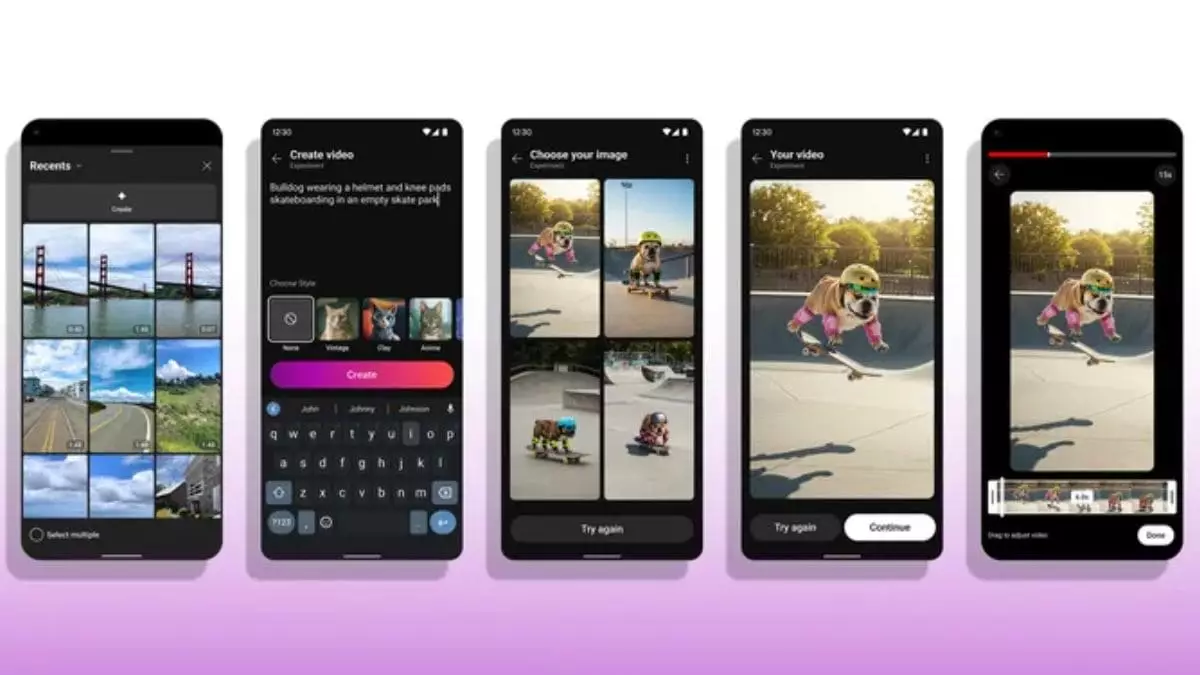On a recent Thursday, YouTube unveiled a groundbreaking feature designed to elevate the creative capabilities of its users. By integrating Google’s advanced Veo 2 artificial intelligence model with its Dream Screen functionality, YouTube has taken a notable step in transforming the landscape of video creation. This enhancement not only allows creators to incorporate unique backgrounds but also facilitates the generation of standalone AI videos, helping users manifest their imaginative concepts in ways that were previously unattainable.
What sets this new tool apart is its text-to-video functionality, enabling users to generate content based on simple descriptive inputs. Creators can articulate a vision, and the Veo 2 model works to bring that vision to life. In an age where content saturation is at an all-time high, YouTube recognizes the challenge of sourcing diverse footage. The introduction of such an AI-enhanced feature is a strategic maneuver to empower creators who may struggle to find specific video clips, thus unlocking new avenues for expression and storytelling.
The Veo 2 model, heralded as a significant evolution from its predecessor, promises enhanced realism and detail in video creation. Launched in December 2024, this AI model showcases improvements in cinematic aspects, such as understanding different genres, lens types, and movement techniques. This level of sophistication allows users to generate videos that adhere to professional standards, thus fostering creativity among both seasoned creators and novices alike.
To utilize this innovative tool, users are guided through an intuitive process: They start by accessing the Shorts camera within the app, followed by tapping the ‘Add’ button to open the media picker. From there, a ‘Create’ option is presented, prompting users to input their desired video description. Creators can choose from various styles, specify the chronological length of the clip, and with a few taps, have their ideas materialize into video content. This user-friendly approach significantly lowers the barriers to video production, encouraging more avid participation from creators.
While the excitement surrounding AI-generated content is palpable, YouTube is also taking proactive measures to counter potential misuse, such as deepfakes. By incorporating SynthID watermarks into all AI-generated videos, the platform aims to create transparency and accountability around synthesized media. This commitment to ethical practices is crucial in safeguarding the integrity of online content, and it serves as a model for other platforms venturing into AI-based solutions.
As it stands, this promising feature is available only in select regions, including Australia, Canada, New Zealand, and the United States, but its rollout signals YouTube’s intent to expand accessibility. As the demand for engaging video content continues to escalate, tools like Veo 2 are likely to become integral components of content creation. YouTube’s initiative may very well set a precedent for the integration of artificial intelligence into creative domains, paving the way for innovations that further blur the lines between human creativity and machine assistance.
In essence, YouTube’s collaboration with AI technology represents a significant stride in the future of video production, fostering an ecosystem where creativity knows no bounds.


Leave a Reply